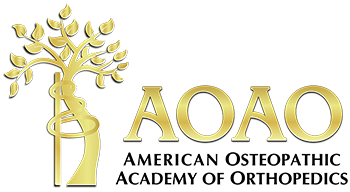1Zimmerman R, 2Udall D, 1Walls H, 1Thomas E, 1Schlechter J
1CHOC, Orange, California, USA; 2Riverside University Health System – Moreno Valley, Moreno Valley, CA, USA
Introduction
Anterior cruciate ligament reconstruction (ACLR) utilizing quadriceps tendon autograft with or without patellar bone block (QTB) has gained popularity in children and adolescents. Incidence of arthrofibrosis following ACLR in pediatric patients for all graft types is between 2-10%. There is a paucity of research focused on arthrofibrosis in pediatric patients undergoing ACLR with QTB. The purpose of this study was to characterize arthrofibrosis and risk factors in children following ACLR with QTB.
Methods
This is an institutional review board (IRB) approved retrospective review of 58 children 17 years or younger who underwent primary ACLR with QTB. Demographics (age, sex, BMI), and pre-, intra-, and postoperative records were reviewed. Incidence of arthrofibrosis was assessed at 3 months postoperatively and at last follow up. Arthrofibrosis was defined as 20° flexion deficit and/or 10° extension deficit compared to contralateral limb with clinically significant arthrofibrosis defined as those requiring procedural intervention.
Results
Fifty-eight patients with average age of 15.9 years (range 13-17) were included. Arthrofibrosis rate was 34.5% at 3 months and 8.6% at last follow-up average 12.5 months (range, 6-29 months). 5.2% of patients had clinically significant arthrofibrosis with procedural intervention performed on average at 9.2 months (range, 3.6-13.6 months). Those with arthrofibrosis at three months postoperatively had significantly reduced flexion at postoperative week 6 compared to those without (70 vs 90 degrees, respectively). Patients with flexion of < 90 degrees at 6 weeks postoperatively had 3.67 times higher odds of developing arthrofibrosis at 3 months. Females had 4.9 times higher odds of developing arthrofibrosis at 3 months. There was no difference in age, BMI, pre- or postoperative Tegner or Pedi-IKDC scores, and time to surgery between cohorts. There was no difference between cohorts in time to physical therapy after surgery, nor the amount of physical therapy in the first 6 weeks and 3 month postoperative period.
Conclusion
This study suggests more patients undergoing ACLR with QTB have a high rate of arthrofibrosis at 3 months. Reduced flexion at 6 weeks and female sex were significant predictors of arthrofibrosis.
References
Ouweleen AJ, Hall TB, Finlayson CJ, Patel NM. Predictors of Arthrofibrosis After Pediatric Anterior Cruciate Ligament Reconstruction: What is the Impact of Quadriceps Autograft? [published online ahead of print, 2021 May 13]. J Pediatr Orthop.


